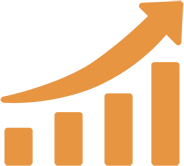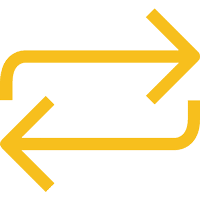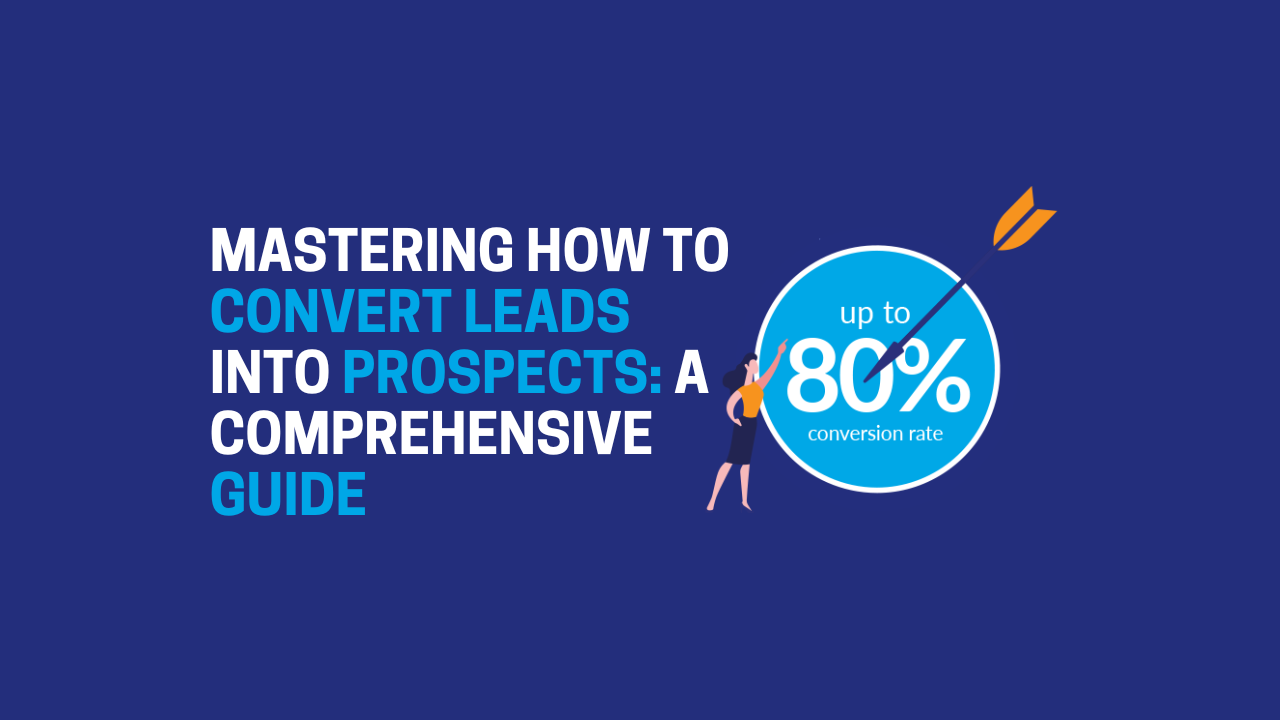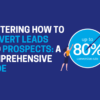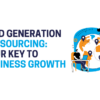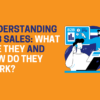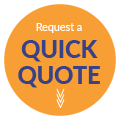Mastering How to Convert Leads into Prospects: A Comprehensive Guide
When it comes to running a successful business, leads are a solid starting point, but what you really need are prospects who are interested, engaged, and ultimately ready to make a purchase. Now, sure, having a list of contacts might look good on paper, but unless they’re taking action, it’s not doing much to grow your business.
The shift from casual interest to meaningful engagement is known as lead conversion. What does this even mean? Well, it’s the process of turning initial curiosity into real commitment, where a potential customer goes from browsing to buying. Now, with all that said, whether you’re dealing with a few leads here and there or managing a steady influx, knowing how to convert them efficiently is key to sustainable growth.
But you’re going to need the right approach, not just that, but you’re really going to need to understand what conversions really mean, and the difference between just some strategy, and a proven strategy that can actually help turn leads into loyal customers and clients. But don’t worry, in this guide, you’re getting all of that. So let’s go ahead and dive in!
Understanding Lead Conversion
Before you can start mastering the art of conversion, you need to know what you’re working with, and that starts with understanding the basic stages of the customer journey.
So, a lead is someone who’s taken a small but significant step toward your business. Maybe they clicked on an ad, signed up for a freebie, or started following you on Instagram. They’ve noticed you, sure, but that doesn’t mean they’re ready to make a purchase. At this stage, it’s more curiosity than commitment.
But a prospect goes a step further. But how? Well, this is someone who’s been qualified; they fit the profile of someone you’d genuinely want to work with or sell to. They’ve shown genuine interest and are actively considering what you offer. Just think of it as moving from someone browsing the shop window to someone who’s walked inside and picked something up.
Okay, now how about conversion? Well, with that, it’s the magic moment where they move from one stage to the next. It’s the process of guiding them through their journey, such as a curious clicker, and getting them to become a confident buyer. So, with this, it’s from building up trust, answering questions, and offering real value along the way.
Steps to Convert Leads into Prospects
Okay, now that we’ve sorted out the definitions, let’s dive into how to convert leads into prospects in a way that actually makes sense in the real world, no jargon, no fluff, just straight-talking advice you can run with. Just go ahead and think of it like dating. You wouldn’t propose marriage on the first date, right? Well, the same goes here. Basically, turning a lead into a prospect takes a little finesse, a touch of charm, and a whole lot of listening.
To sum it all up, conversion isn’t about bulldozing your way to a sale. It’s about gently guiding someone toward a solution they didn’t even realise they needed until you came along. But we first need to break down what it really takes to warm up those leads and turn them into genuine, interested prospects who are actually keen to hear more from you.
Qualify Your Leads
Alright, so for starters, chasing every single lead is a quick route to burnout. Not everyone who fills out a form or downloads a freebie is ready (or right) for your business. It’s really going to help to just use a handy framework like BANT (Budget, Authority, Need, and Timeline) to separate the curious from the committed.
Think of it like this: if they can afford you, have the power to say yes, genuinely need what you offer, and want it soon? Well, that’s your green light to move forward.
Segment and Personalise
Well, gone are the days when one generic email blast would do the trick. Today, people expect content that feels like it was made just for them, because, honestly, they’re drowning in options. Ideally, you’ll need to break your leads into groups based on behaviour, interests, or demographics, and then talk to them like real people.
Nurture with Value
If someone’s giving you their time and attention, you’d better make it worth their while. Okay, but how? Well, instead of going in for the hard sell straight away, focus on building trust. You’ll need to share genuinely useful stuff, think how-to guides, industry insights, or quick wins they can apply now.
When you’re the brand that keeps showing up with helpful tips instead of just asking for money, you become someone they want to keep hearing from. Simple enough, right?
Effective Ways to Turn Leads into Customers
Alright, so once you’ve got a pool of warm prospects, so the next step is figuring out how to nudge them across the finish line without sounding like a used car salesperson from a 90s sitcom (well, any era really). No one likes being pressured, and let’s go ahead and face the facts that people can smell a hard sell from a mile away. They don’t like that smell, you don’t either, right?
Just like what was mentioned earlier, the goal here is to be trustworthy, to be helpful, and above all, just be real. Let’s go ahead and look at how to do just that, with strategies that feel more like natural conversations and less like a sales funnel on steroids:
Start By Building Relationships
People don’t just buy products, they buy from people. You have to remember that. So, ditch the robot voice and start genuine conversations. Send follow-up emails that sound like they came from a real person, not a sales machine. Check in, answer questions, and be responsive. Really, a little warmth goes a long way.
Focus on the Pain Points
Bluntly put it, nobody really cares how many shiny features your product has. What they care about is what it can do for them. Will it save them time? Reduce stress? Make them look good to their boss? That’s what you need to tap into. Well, you need to get specific about the problems your product solves and use language that mirrors how your prospects talk about those challenges.
Where’s the Proof?
So, just go ahead and imagine walking into a restaurant with no reviews. It’s a bit risky, right? Well, the same goes for your product or service. It’s really going to help to have social proof, like testimonials, reviews, and case studies, that can seal the deal. But you should really share real stories from happy customers who had the same struggles your leads are facing.
Okay, you should see it like this: people trust people, especially ones who’ve been in their shoes and come out smiling on the other side.
Mastering the Art of Converting Leads into Clients
This part just can’t be stressed enough, but clients are long-term relationships, not just one-time buyers. So if your business model is more service-based, converting leads into clients is a slightly different dance (we’ll go back to the dating example earlier). So, just think of it as going from a casual coffee date to moving in together. It’s no longer about charming them with a few good lines; now you’ve got to show up consistently, be reliable, and actually deliver on what you promised.
In short, the client relationship isn’t a sprint to the sale; it’s more of a steady marathon, and yeah, it’s complete with regular check-ins, support, and a dash of emotional intelligence.
You Need to Position Yourself as an Expert
When it comes to winning clients, confidence is key, but not the shouty, salesy kind. You want to quietly show that you know your stuff. Share your expertise through thought leadership content like blog posts, host relaxed but informative webinars, or offer a no-strings-attached consultation. The goal is to make them think, “This person gets it.” Just like what was mentioned earlier, when you become the go-to source for guidance in your niche, you’re not just an option, you’re the option.
Start Making Onboarding Effortless
Seriously, nothing kills momentum faster than a clunky onboarding experience. If someone says “yes,” roll out the red carpet, not a stack of confusing forms. There shouldn’t be any homework involved.
You’ll Have to Provide Ongoing Support
You’ve got them through the door, okay, great! But if you ghost them after the first invoice, that relationship won’t last. Keep showing up in helpful, non-intrusive ways. You have to check in or else they’re going to question whether or not you still care (or if you ever did in the first place).
Unique Strategies for Converting Leads to Customers
Alright, so let’s spice things up with some out-of-the-box strategies. Honestly, most sales pitches feel like déjà vu: predictable, forgettable, and a bit snooze-worthy. But your business isn’t boring, and your lead conversion tactics shouldn’t be either. You really can’t waste time with cookie-cutter strategies.
Consider Using Interactive Content
Nobody wants to read another wall of text. But give someone a quiz titled “What Kind of [Product/Service] User Are You?” and suddenly, you’ve got their attention. Just think of it like a two-way conversation instead of a monologue. They like that!
Create Some FOMO
Oh yes, Fear of Missing Out is a powerful thing. It’s the reason limited-edition trainers sell out in minutes and why people queue at food trucks that “sell out fast.” So, why not tap into it? It might help to just see a countdown timer, showcase how many spots are left, or highlight that this deal won’t be around next week. People hate feeling left out, so just use it to your (ethical) advantage.
Get Personal with Video
You know what cuts through the digital noise? A face. A voice. And of course, a person speaking directly to you. Personalised video messages feel like someone took time out of their day just for you, and that makes people feel special. But really, you don’t need Hollywood lighting or a fancy set-up, just a genuine tone, a warm smile, and a clear message. No, really, it can actually be that simple!
How to Seamlessly Convert Leads into Sales
Okay, you’ve warmed them up, now it’s time to seal the deal. If you’re thinking about how to convert leads into sales, it’s all about timing and delivery. Really, it’s best to just get the timing right, and you’ve got a perfect result. Pretty much, if you miss the moment, and you’re left with a mess or something completely dried out.
Don’t Delay the Follow-Up
Yes! Something else that really needs to be pushed! Timing really is everything! If someone’s shown interest, like clicking a link, downloading a guide, or booking a call, they’re basically raising their hand, saying, “Hey, I’m intrigued.” But that window doesn’t stay open forever. So you’ll absolutely need to follow up fast!
Align Your Sales and Marketing Teams
You know that awkward moment when someone gets different answers from two people at the same company? Yeah, let’s avoid that. If your marketing is shouting about one thing, but your sales team is talking about something else, it’s confusing for your lead, and yeah, confusion kills sales.
Start Using CRM Tools
Sure, no one has the mental capacity to keep track of every single lead manually. But good CRM does mean that it keeps tabs on conversations, preferences, and where each lead is in the funnel. Basically, you’ll know who’s ready for a pitch, who needs more nurturing, and who’s gone quiet. Plus, it helps you personalise your follow-ups, so you don’t sound like you’re copying and pasting the same script for everyone.
Converting Sales Leads
Now let’s look at the entire journey. Yes, the whole journey, right from lead capture to final sale, what does a successful conversion process really look like? Bu to make conversions work consistently, you need a structured approach that covers each stage of the customer journey.
Stage 1: Attract
Now this is your “first impression” moment. You want to grab attention and make people curious about what you do. Use engaging content that speaks to your ideal customer. Just think of this as standing outside your shop waving a sign—not shouting, but smiling, waving, and offering something intriguing enough to make people step closer.
Stage 2: Engage
Okay, so they’ve noticed you, great! Now it’s time to give them a reason to stick around. So, a compelling offer is your secret weapon here. Usually it’s a discount code or eBook, and usually it’s in exchange for their contact info (their email to be specific).
Stage 3: Nurture
This is where you build the relationship. You really have to keep the conversation going with helpful emails, targeted ads, and thoughtful touchpoints. The goal is to stay top of mind without being overbearing, so yeah, there needs to be a balance!
Stage 4: Convert
Now’s the time to make your move, but do it with finesse. Your sales pitch should feel like the natural next step in the journey, not a pressure-filled ambush (remember the used car salesman bit from earlier?). You have to highlight your product, but in the right way, of course; they need to want it, not you wanting them to want it.
Stage 5: Retain
The sale isn’t the end of the journey, sure that’d be great, but it’s just the start of the next chapter. After someone becomes a customer, keep the love alive. Follow up to check in, ask for feedback, and continue delivering value through support, updates, or perks. They don’t want to be just another transaction.
Essentials for a Successful Lead Conversion
Okay, let’s just go ahead and wrap this up with some of the non-negotiables. Pretty much, these are the foundational building blocks of lead conversion that work across industries, no matter your strategy or audience. You need to have these basics in place, you’ll always be fighting an uphill battle.
1. A Clear Funnel
Leads need to know exactly where they are and where they’re headed. If your buyer journey feels like a maze, you’ll lose people before you even get the chance to make a pitch. You’ll need to remove any friction and keep the route obvious.
2. Consistent Branding
Now here’s something to keep in mind (and it was somewhat mentioned earlier), consistency is more than just slapping your logo on everything, it’s about creating a seamless experience wherever your leads interact with you. Your emails, website, social posts, ads, and even your tone of voice should all feel like they come from the same place.
3. Data-Driven Decisions
Yeah, guesswork is risky. Way too risky actually. But data gives you clarity. When you track how leads move through your funnel, what content they engage with, and where they drop off, you’re better equipped to make smart decisions. Usually, it’s about tweaking and making adjustments, too, of course, through analytics.
4. Human Connection
No matter how automated your process becomes, people want to feel seen. Yeah, it’s easy to slip into treating leads like a list of names and stats, but behind every email open or form submission is a real person with questions, goals, and concerns. They’re not just money, they’re an actual human that have pain points, they have wins, you need to think about those.
Bringing It All Together
Successfully converting leads into loyal customers or clients doesn’t happen by accident. There’s no flukes or anything like that. Instead, it takes structure, consistency, and a good dose of understanding what makes people tick.
But here’s the thing: you don’t have to do it all alone. If you want expert support from a team that lives and breathes lead conversion, The Lead Generation Company is here to help. It really doesn’t matter if you’re starting from scratch or want to fine-tune your strategy; our tailored solutions are designed to turn interest into action, and action into measurable results.
Converting leads into high-value prospects takes the right strategy, expertise, and persistence. At The Lead Generation Company, we specialize in B2B lead generation, appointment setting, and telemarketing to help businesses like yours drive real results.
Let’s start a conversation! Contact us today to discover how we can boost your lead conversion rates and accelerate business growth.
📩 Get in Touch or call us at 0333 344 3470

Ryan Whyte is a Director of The Lead Generation Company where he leads a team of B2B telemarketers to deliver high-quality leads for clients. With a strong background in campaign management and a focus on driving results, Ryan is dedicated to optimising strategies that maximise client success in B2B lead generation.

